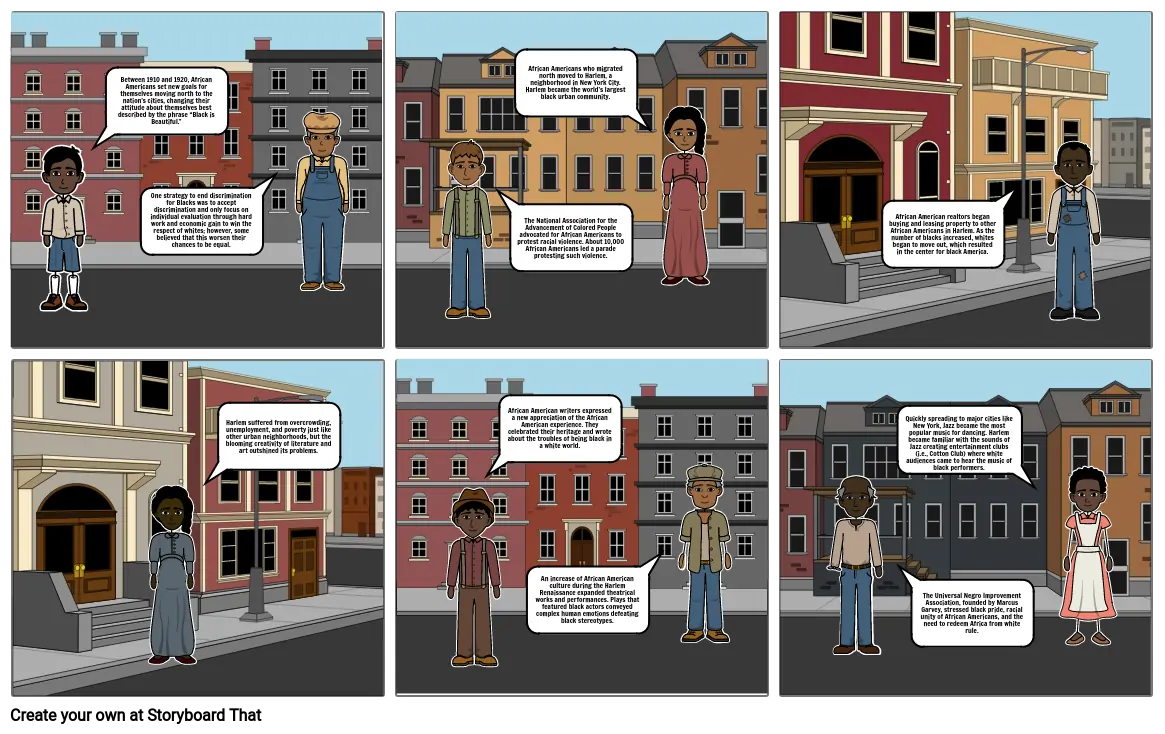Harlem Renaissance Fact Collection

Texto del Guión Gráfico
- Between 1910 and 1920, African Americans set new goals for themselves moving north to the nation’s cities, changing their attitude about themselves best described by the phrase “Black is Beautiful.”
- One strategy to end discrimination for Blacks was to accept discrimination and only focus on individual evaluation through hard work and economic gain to win the respect of whites; however, some believed that this worsen their chances to be equal.
- The National Association for the Advancement of Colored People advocated for African Americans to protest racial violence. About 10,000 African Americans led a parade protesting such violence.
- African Americans who migrated north moved to Harlem, a neighborhood in New York City. Harlem became the world’s largest black urban community.
- African American realtors began buying and leasing property to other African Americans in Harlem. As the number of blacks increased, whites began to move out, which resulted in the center for black America.
- Harlem suffered from overcrowding, unemployment, and poverty just like other urban neighborhoods, but the blooming creativity of literature and art outshined its problems.
- African American writers expressed a new appreciation of the African American experience. They celebrated their heritage and wrote about the troubles of being black in a white world.
- An increase of African American culture during the Harlem Renaissance expanded theatrical works and performances. Plays that featured black actors conveyed complex human emotions defeating black stereotypes.
- The Universal Negro Improvement Association, founded by Marcus Garvey, stressed black pride, racial unity of African Americans, and the need to redeem Africa from white rule.
- Quickly spreading to major cities like New York, Jazz became the most popular music for dancing. Harlem became familiar with the sounds of Jazz creating entertainment clubs (i.e., Cotton Club) where white audiences came to hear the music of black performers.
Más de 30 millones de guiones gráficos creados

